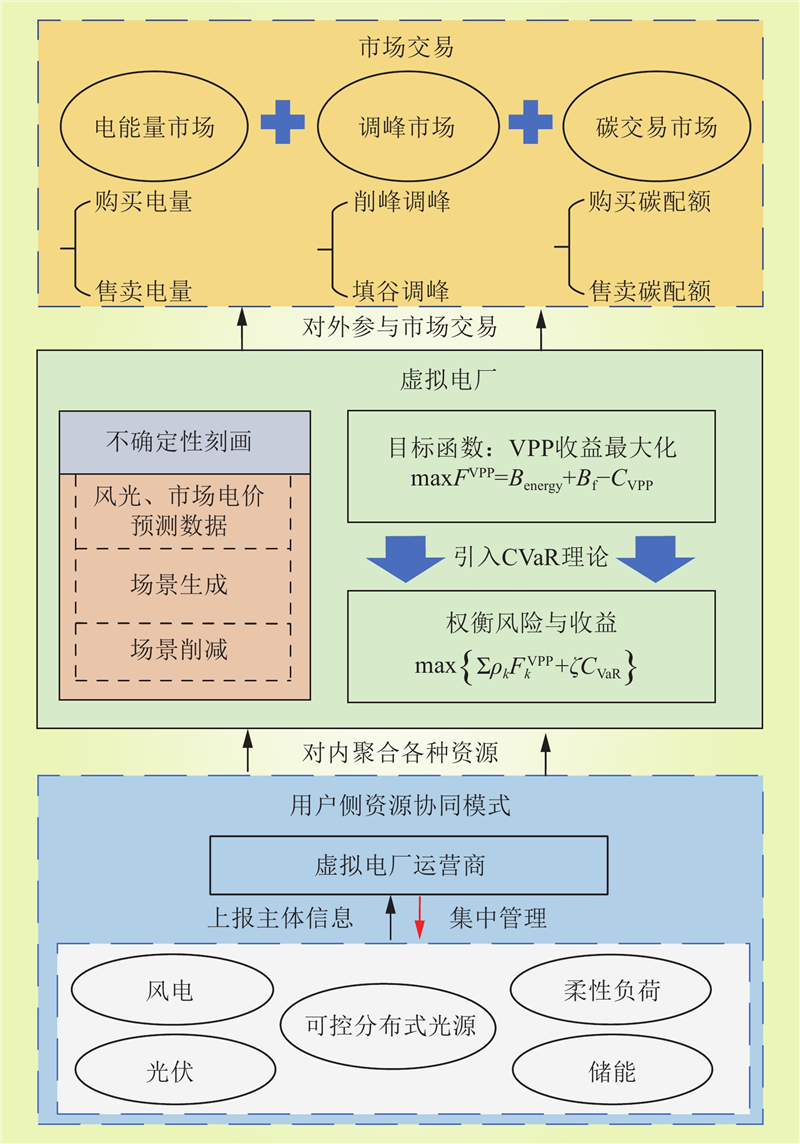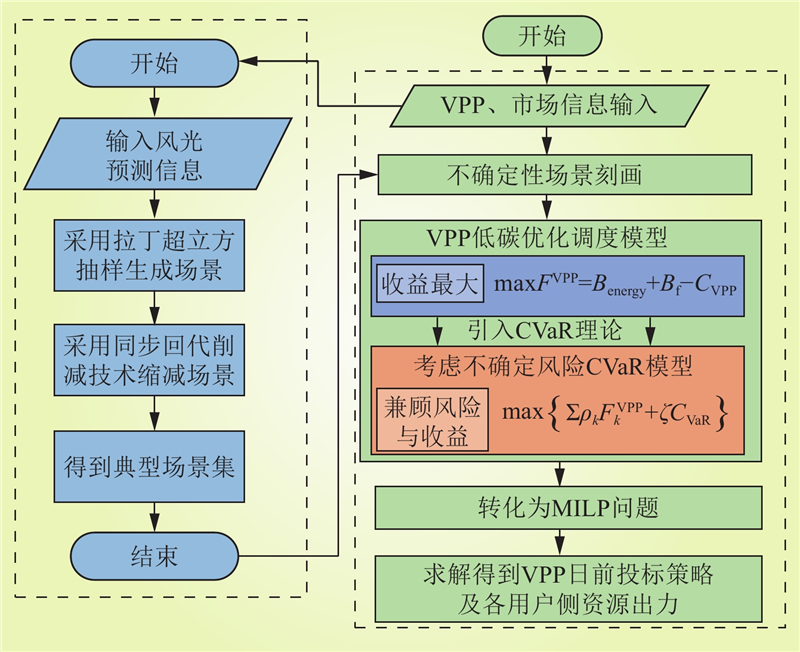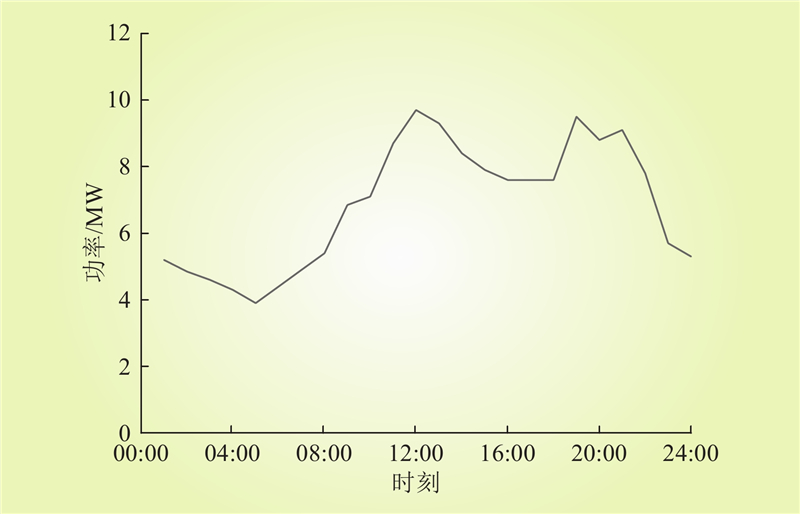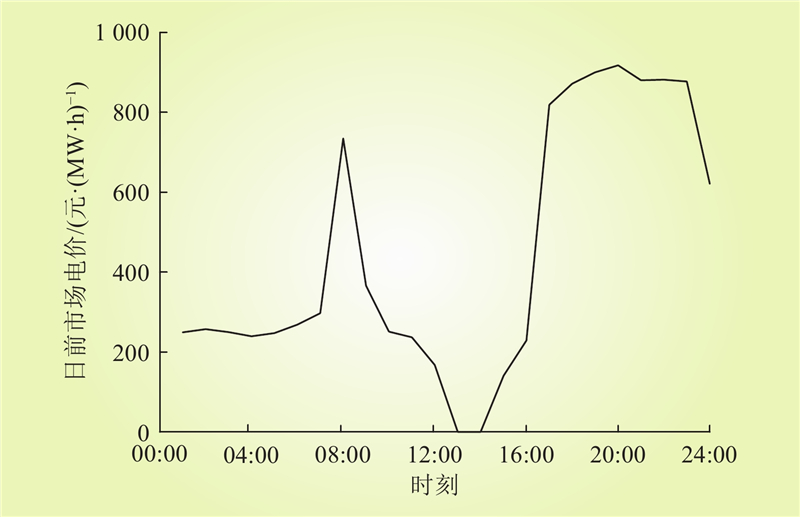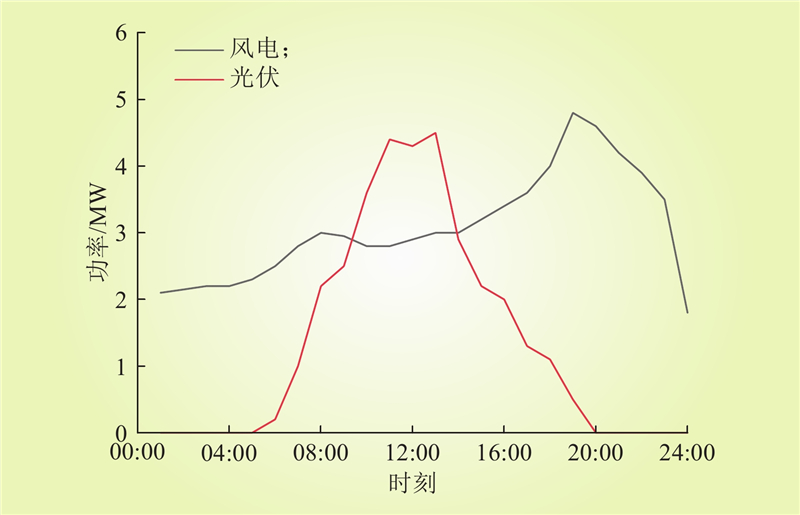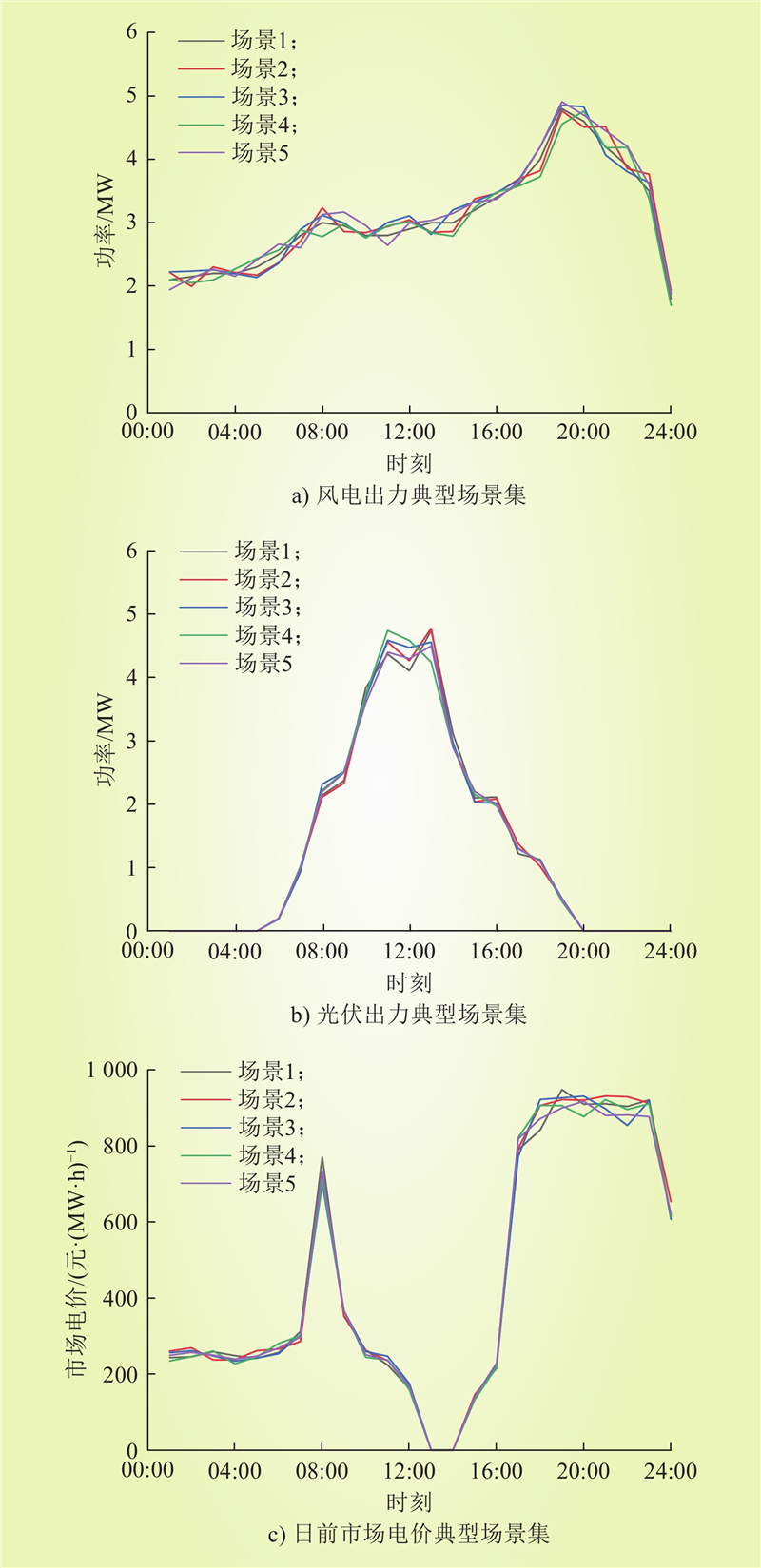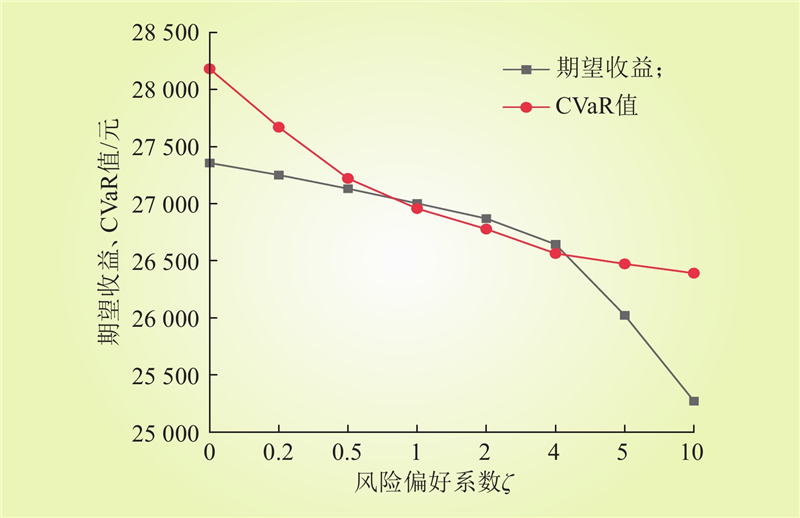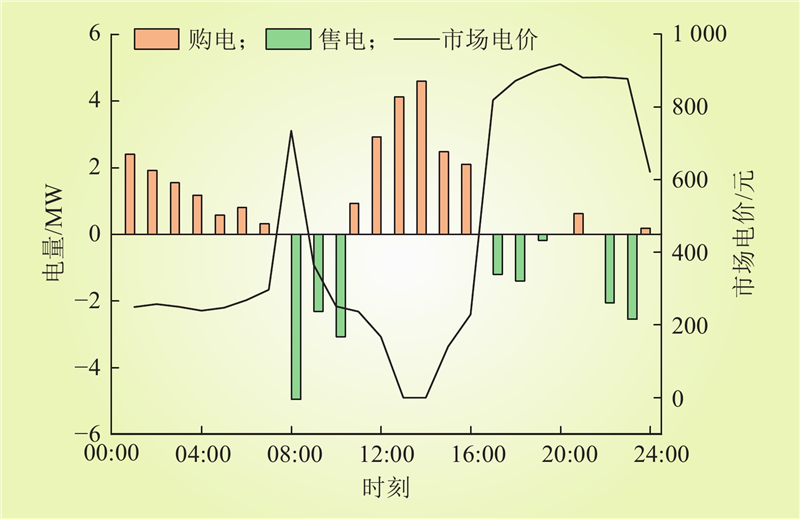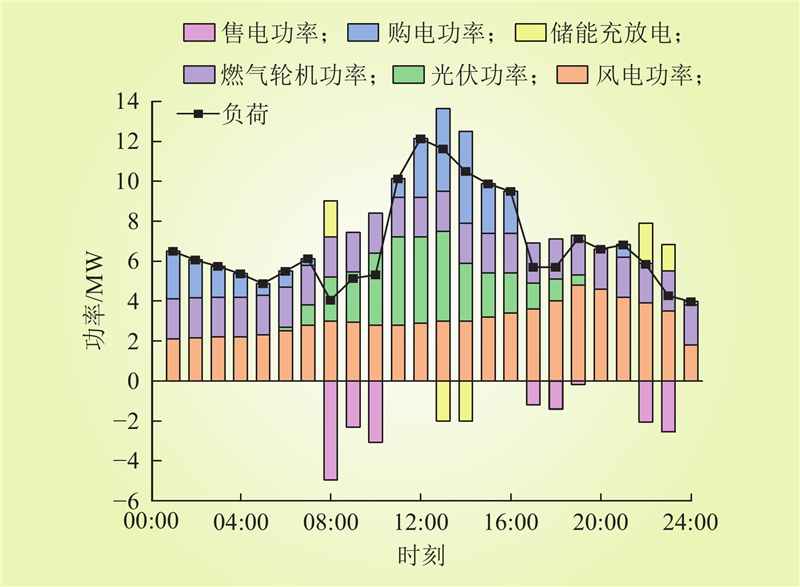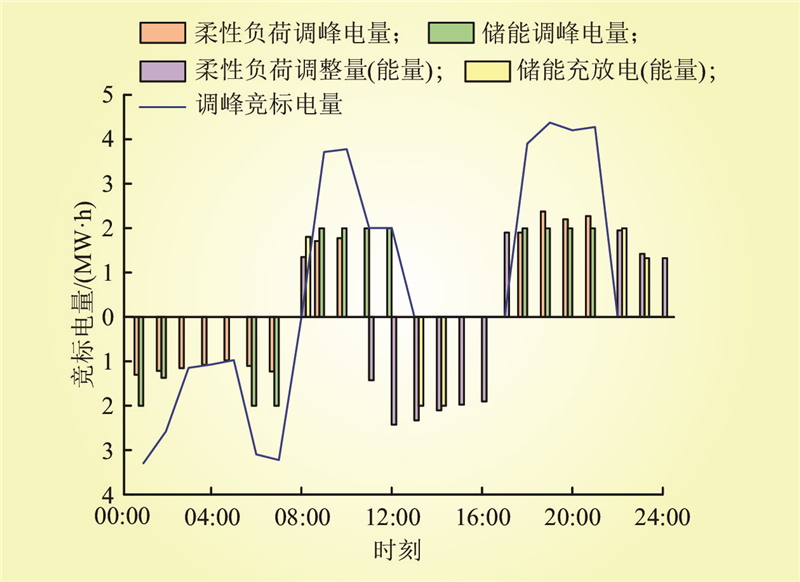| 1 |
ZHANG Y M, SUN P K, JI X Q, et al. Low-carbon economic dispatch of integrated energy systems considering full-process carbon emission tracking and low carbon demand response[J]. IEEE Transactions on Network Science and Engineering, 2024, PP (99): 1- 16.
|
| 2 |
魏震波, 孙舟倍, 梁政. 基于多目标两阶段规划的虚拟电厂优化调度[J]. 南方电网技术, 2023, 17 (4): 109- 118.
|
|
WEI Zhenbo, SUN Zhoubei, LIANG Zheng. Virtual power plant optimal dispatching based on multi-objective and two-stage programming[J]. Southern Power System Technology, 2023, 17 (4): 109- 118.
|
| 3 |
徐慧慧, 田云飞, 缪猛, 等. 计及碳交易和需求响应的虚拟电厂低碳经济调度[J]. 智慧电力, 2023, 51 (8): 1- 7.
DOI
|
|
XU Huihui, TIAN Yunfei, MIAO Meng, et al. Low carbon economy dispatch of virtual power plants considering carbon trading and demand response[J]. Smart Power, 2023, 51 (8): 1- 7.
DOI
|
| 4 |
宋天琦, 吕志鹏, 宋振浩, 等. 虚拟电厂规模化灵活资源聚合调控框架研究与思考[J]. 中国电力, 2024, 57 (1): 2- 8.
|
|
SONG Tianqi, LV Zhipeng, SONG Zhenhao, et al. Research and thinking on the aggregation and dispatching control framework of virtual power plant's large scale flexible resources[J]. Electric Power, 2024, 57 (1): 2- 8.
|
| 5 |
李嘉媚, 艾芊. 考虑调峰辅助服务的虚拟电厂运营模式[J]. 电力自动化设备, 2021, 41 (6): 1- 13.
|
|
LI Jiamei, AI Qian. Operation mode of virtual power plant considering peak regulation auxiliary service[J]. Electric Power Automation Equipment, 2021, 41 (6): 1- 13.
|
| 6 |
孙辉, 范轩轩, 胡姝博, 等. 虚拟电厂参与日前电力市场的内外协调竞标策略[J]. 电网技术, 2022, 46 (4): 1248- 1262.
|
|
SUN Hui, FAN Xuanxuan, HU Shubo, et al. Internal and external coordination bidding strategy of virtual power plant participating in day-ahead power market[J]. Power System Technology, 2022, 46 (4): 1248- 1262.
|
| 7 |
石梦舒, 许小峰, 张继广, 等. 考虑电-氢市场的虚拟电厂两阶段优化策略研究[J]. 发电技术, 2023, 44 (5): 645- 655.
DOI
|
|
SHI Mengshu, XU Xiaofeng, ZHANG Jiguang, et al. A two-stage optimization strategy for virtual power plants considering the electricity-hydrogen market[J]. Power Generation Technology, 2023, 44 (5): 645- 655.
DOI
|
| 8 |
王钦, 陈业夫, 蔡新雷, 等. 考虑柔性负荷和阶梯型碳交易的低碳经济优化调度策略[J]. 广东电力, 2024, 37 (1): 76- 85.
|
|
WANG Qin, CHEN Yefu, CAI Xinlei, et al. Optimization scheduling strategy for low-carbon economy considering flexible loads and tiered carbon trading[J]. Guangdong Electric Power, 2024, 37 (1): 76- 85.
|
| 9 |
李强, 王尧, 胡迎迎, 等. 考虑碳交易成本的输储多阶段协调规划方法[J]. 中国电力, 2023, 56 (12): 199- 205.
|
|
LI Qiang, WANG Yao, HU Yingying, et al. Multi-stage coordinated planning method for transmission network and energy storage considering carbon trading cost[J]. Electric Power, 2023, 56 (12): 199- 205.
|
| 10 |
ZHANG L, LIU D Y, CAI G W, et al. An optimal dispatch model for virtual power plant that incorporates carbon trading and green certificate trading[J]. International Journal of Electrical Power & Energy Systems, 2023, 144, 108558.
|
| 11 |
YAN Q Y, ZHANG M J, LIN H Y, et al. Two-stage adjustable robust optimal dispatching model for multi-energy virtual power plant considering multiple uncertainties and carbon trading[J]. Journal of Cleaner Production, 2022, 336, 130400.
DOI
|
| 12 |
WANG Y, WU X M, LIU M C, et al. Bidding strategy of the virtual power plant considering green certificates and carbon trading[J]. Energy Reports, 2023, 9, 73- 84.
|
| 13 |
LI Y, DENG Y Y, WANG Y H, et al. Robust bidding strategy for multi-energy virtual power plant in peak-regulation ancillary service market considering uncertainties[J]. International Journal of Electrical Power & Energy Systems, 2023, 151, 109101.
|
| 14 |
WANG Y N, LI G D, ZHOU B W, et al. Optimal dispatch strategy for virtual power plants with adjustable capacity assessment of high-energy-consuming industrial loads participating in ancillary service markets[J]. Sustainability, 2023, 15 (13): 10479.
DOI
|
| 15 |
WANG J, ILEA V, BOVO C, et al. Optimal self-scheduling for a multi-energy virtual power plant providing energy and reserve services under a holistic market framework[J]. Energy, 2023, 278, 127903.
DOI
|
| 16 |
李凌昊, 邱晓燕, 张浩禹, 等. 电力市场下的虚拟电厂风险厌恶模型与利益分配方法[J]. 电力建设, 2021, 42 (1): 67- 75.
DOI
|
|
LI Linghao, QIU Xiaoyan, ZHANG Haoyu, et al. Risk aversion model and profit distribution method of virtual power plant in power market[J]. Electric Power Construction, 2021, 42 (1): 67- 75.
DOI
|
| 17 |
卫志农, 陈妤, 黄文进, 等. 考虑条件风险价值的虚拟电厂多电源容量优化配置模型[J]. 电力系统自动化, 2018, 42 (4): 39- 46.
DOI
|
|
WEI Zhinong, CHEN Yu, HUANG Wenjin, et al. Optimal allocation model for multi-energy capacity of virtual power plant considering conditional value-at-risk[J]. Automation of Electric Power Systems, 2018, 42 (4): 39- 46.
DOI
|
| 18 |
ZHAO H T, WANG B, WANG X Y, et al. Active dynamic aggregation model for distributed integrated energy system as virtual power plant[J]. Journal of Modern Power Systems and Clean Energy, 2024, 52 (7): 125- 137.
|
| 19 |
NAVAL N, YUSTA J M. Virtual power plant models and electricity markets - A review[J]. Renewable and Sustainable Energy Reviews, 2021, 149, 111393.
DOI
|
| 20 |
崔杨, 安宁, 付小标, 等. 面向高比例新能源电力系统调峰需求的储能容量配置方法综述[J]. 东北电力大学学报, 2023, 43 (1): 1- 8.
|
|
CUI Yang, AN Ning, FU Xiaobiao, et al. Overview of energy storage capacity allocation methods for high-proportion new energy power system peak shaving demand[J]. Journal of Northeast Electric Power University, 2023, 43 (1): 1- 8.
|
| 21 |
吴艳娟, 靳鹏飞, 刘长铖, 等. 基于奖惩阶梯型碳价机制的能源枢纽低碳优化策略[J]. 电力工程技术, 2024, 43 (3): 88- 98.
DOI
|
|
WU Yanjuan, JIN Pengfei, LIU Changcheng, et al. Low-carbon optimization strategy for energy hub based on reward-punishment ladder carbon price mechanism[J]. Electric Power Engineering Technology, 2024, 43 (3): 88- 98.
DOI
|
| 22 |
苏志鹏, 王莉, 梁欣怡, 等. 考虑阶梯式碳交易及综合需求响应的虚拟电厂优化调度[J]. 中国电力, 2023, 56 (12): 174- 182.
|
|
SU Zhipeng, WANG Li, LIANG Xinyi, et al. Optimal dispatch of virtual power plant considering stepped carbon trading and comprehensive demand response[J]. Electric Power, 2023, 56 (12): 174- 182.
|
| 23 |
李亚峰, 王维庆. 考虑阶梯碳交易机制的含混氢天然气综合能源系统容量配置[J]. 电力科学与技术学报, 2023, 38 (6): 237- 247.
|
|
LI Yafeng, WANG Weiqing. Capacity allocation of hydrogen-blended natural gas integrated energy system considering ladder carbon trading mechanism[J]. Journal of Electric Power Science and Technology, 2023, 38 (6): 237- 247.
|
| 24 |
李晓舟, 秦文萍, 景祥, 等. 计及不确定风险和多主体协同的虚拟电厂参与主辅市场联合优化策略[J/OL]. 电网技术: 1–16 [2024-07-10]. https://doi.org/10.13335/j.1000-3673.pst.2023.1309.
|
|
LI Xiaozhou, QIN Wenping, JING Xiang, et al. Joint optimization strategy for virtual power plant participating in main and auxiliary markets considering uncertain risks and multi-agent coordination[J/OL]. Power System Technology: 1–16 [2024-07-10]. https://doi.org/10.13335/j.1000-3673.pst.2023.1309.
|
| 25 |
张玉敏, 孙鹏凯, 吉兴全, 等. 考虑扩展碳排放流的综合能源系统低碳经济调度[J]. 电网技术, 2023, 47 (8): 3174- 3191.
|
|
ZHANG Yumin, SUN Pengkai, JI Xingquan, et al. Low-carbon economic dispatch of integrated energy system with augmented carbon emission flow[J]. Power System Technology, 2023, 47 (8): 3174- 3191.
|


